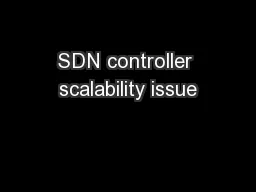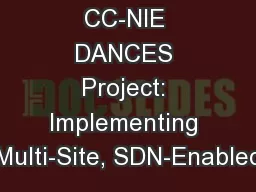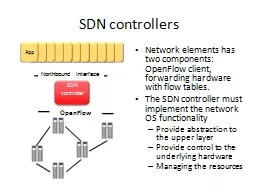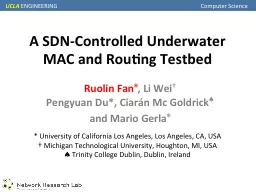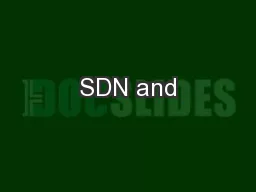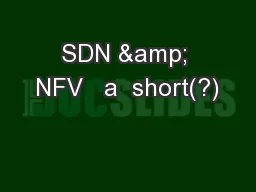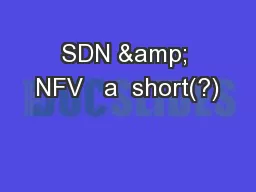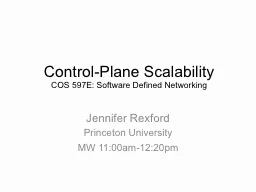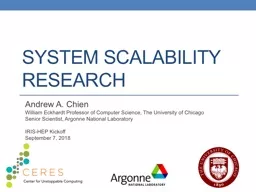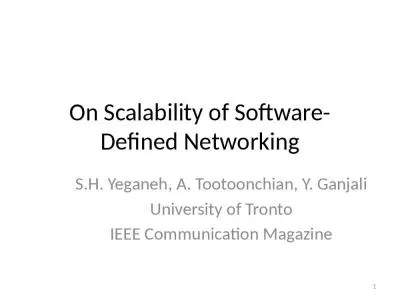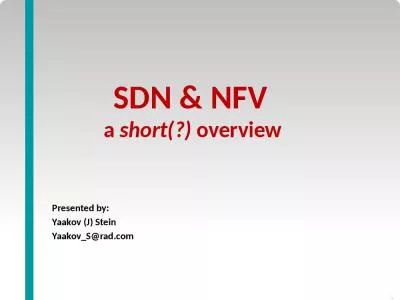PPT-SDN controller scalability issue
Author : aaron | Published Date : 2017-04-03
Fundamental issue the speed gap between data plane and control plane Switch OS Switch HW 10100 Gbps Switch OS Switch HW 10100 0Mbps Switch OS Switch HW SDN controller
Presentation Embed Code
Download Presentation
Download Presentation The PPT/PDF document "SDN controller scalability issue" is the property of its rightful owner. Permission is granted to download and print the materials on this website for personal, non-commercial use only, and to display it on your personal computer provided you do not modify the materials and that you retain all copyright notices contained in the materials. By downloading content from our website, you accept the terms of this agreement.
SDN controller scalability issue: Transcript
Download Rules Of Document
"SDN controller scalability issue"The content belongs to its owner. You may download and print it for personal use, without modification, and keep all copyright notices. By downloading, you agree to these terms.
Related Documents

